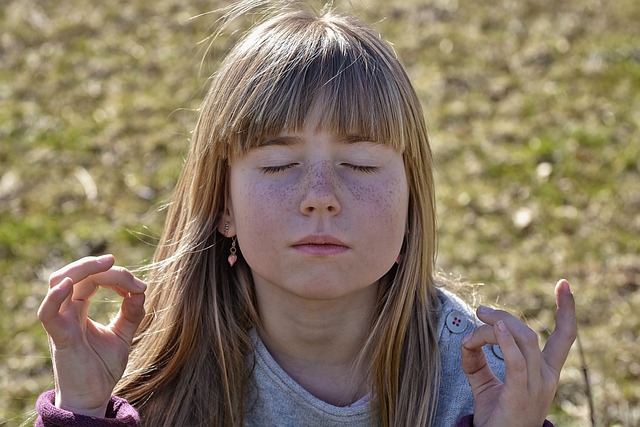 New York City Mayor Eric Adams is requiring all public schools to offer two to five minutes of mindful breathing exercises to students every day. Because the popular practice of mindfulness is based in Buddhism, many parents are accusing the city of introducing religion into the classroom.
New York City Mayor Eric Adams is requiring all public schools to offer two to five minutes of mindful breathing exercises to students every day. Because the popular practice of mindfulness is based in Buddhism, many parents are accusing the city of introducing religion into the classroom.
According to the New York Post, Mayor Adams made the announcement on June 27 to students at PS 005 in Brooklyn.
“There’s a science to breathing,” Adams said. “Breathing calms your nervous system, it helps to center us and help us regain our sense of balance and focus. It is a valuable, low-cost tool that is proven to improve mental health and well being.”
Mindful breathing involves focused attention on one’s breathing and how it feels to inhale and exhale. It is a part of the practice of mindfulness meditation.
It will be left up to school principals and administrators to decide when to introduce the practice in the schools, such as before classes begin in the morning or during gym classes. Children will not be forced to participate.
“Although we are building it in as a requirement, it is not forced on anyone. If you choose not to do the breathing exercise that’s fine. Eventually you will find your way,” Adams promised.
The new breathing program is part of the NYC Department of Education’s Yoga and Mindfulness Teacher Preparation Program which is intended to expand yoga and meditation for students and staffers alike. Headed by the department’s chief yogi, Barnaby Spring, teaching yoga and meditation to children is considered as important as academics.
“This is specifically to begin to put the social-emotional needs of children in a place where it’s just as important if not more important than academic learning,” Spring told Mindful.org in October.
Although there is quality scientific evidence to support the use of breathing exercises to improve physical well-being, the science does not say it has to be breathing exercises peculiar to eastern religions, such as pranayama (yoga) and mindfulness (Buddhism). Diaphragmatic breathing, the 4-7-8 method, and any type of slow, deep breathing exercise have the same physiological effects.
As this article on the website of prominent Houston cardiologists explains, “Slow, deep breathing activates the parasympathetic nervous system which decreases the heart rate and dilates blood vessels, reducing your overall blood pressure. As your breathing becomes slower, your brain associates it with a state of relaxation, which causes your body to slow down other functions like digestion. By taking a moment to breathe deeply in a stressful situation, you can train your body to react in a calm manner when facing challenges at work or in your home life. This can improve your overall heart health and help you face problems with a clear head.”
As the comment section on the Post article affirms, the public is not entirely sold on the idea of incorporating mindful breathing into children’s education and would like to see the city’s failing public schools focus more on academics.
One commenter wrote: “…[H]ow about just getting the basics first? Reading, writing, arithmetic, basic science, American history, civil responsibility and respect for others. And boys are boys, girls are girls. The ‘science, remember?’ That would be a nice start based on the results of a collapsing education system.”
Another demanded: “…How about firing woke CRT teachers who are only hurting the students. How about enforcing more tough penalties and security measures so that students are not shot and killed by other students. How about making sure that young kindergarten kids are not having drag queen reading day! Hundreds of millions dollars poured into the education system in a NYC and it’s getting worse and worse.”
Others complained about the introduction of practices with religious origins.
“Yep, they took prayer out from schools and things went downhill. But they welcome a different form of religious practice,” one woman wrote.
Another added, “There are people whose religious beliefs forbid yoga or anything remotely resembling it. How will these students be accommodated during this time? Unfortunately, I’m asking a question to which I already know the answer.”
One parent worried: “What if the kid refuses to do the exercise and just sits quietly? This is a form of worship in Buddhism. No way my kid would be doing it.”
Parents will now have to add this latest misguided idea to the ever-expanding list of complaints against a public education system that has truly lost its way.
© All Rights Reserved, Living His Life Abundantly®/Women of Grace® http://www.womenofgrace.com









